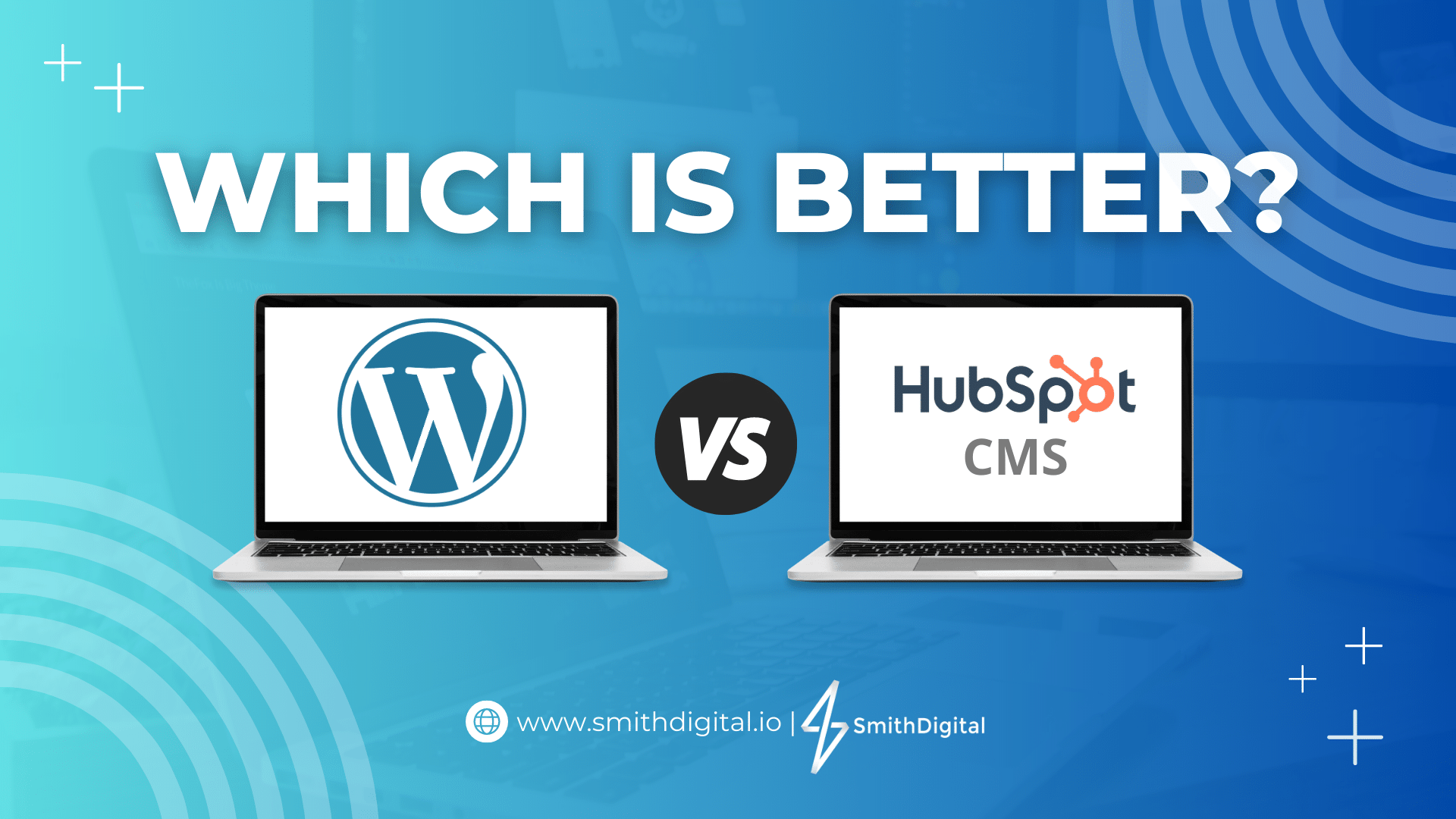Video Marketing for Professional Services: How the Power of Video Content Builds Trust and Leads
Still relying on blog posts and white papers to win new clients? That might be why your leads are stalling.
%20(23).png?width=302&height=302&name=_SD%20web%20assets%202025%20(500%20x%20500%20px)%20(23).png)
6 min read
Eric Smith
:
Oct 13, 2025 1:30:00 PM
You're investing in content, but it’s not generating leads. It’s not supporting sales. It’s not moving the needle.
According to the Content Marketing Institute (CMI), only 29% of B2B tech marketers say their content is effective. That’s not just underperformance, it’s a warning sign. In a market where attention is scarce and buying decisions are complex, content without a strategy is content that gets ignored.
Here’s the hard truth: tech buyers don’t care about your content unless it solves a real, urgent problem. Generic blogs and fluffy thought leadership won’t cut it. This isn’t about creating more content. It’s about building a content strategy for tech companies, one that attracts the right buyers, earns their trust, and supports every stage of the sales cycle.
This guide shows you how to do exactly that.
Too many tech companies invest in content but fail to see results. The issue isn’t the volume of content, it’s the absence of a clear, goal-driven strategy. If your blog posts, webinars, or whitepapers aren’t tied to buyer needs or measurable outcomes, they’re just clutter. Here’s where most technology content marketing efforts go wrong:
Most technology companies publish content without knowing what it’s supposed to do. Blogs, LinkedIn posts, newsletters—they’re created out of habit, not intent. That’s why they don’t generate leads, support sales, or drive growth. Content marketing strategies need structure:
Without these answers, even the most polished asset will definitely miss its mark.
Your audience isn’t one-size-fits-all. Different buyers need different types of content, depending on where they are in the funnel. But most tech businesses ignore this. They produce top-of-funnel content, skip the middle, and hope for the best.
That’s a mistake. Every piece of content must be mapped to specific marketing goals, whether it's attracting leads, nurturing them, or supporting final-stage sales. Without alignment, your content marketing funnel falls apart.
Tech content marketing fails when it assumes every buyer thinks alike. In reality, your audience is complex—different roles, different priorities, different expectations. If your content strategies don’t reflect that, you’ll miss the mark every time.
Before you build a content marketing strategy for technology, you need a clear understanding of who you're speaking to and what they care about. Because when you create content without context, you create confusion, not conversions.
In technology companies, the decision-making team is rarely a single person. You're selling to CTOs, CFOs, security leads, and sometimes non-technical execs. Each one evaluates your product or service through a different lens.
That means your content marketing plan needs to deliver relevant content for each role:
Different buyers trust different types of content. The more precisely you tailor your content, the more impact it has.
Great content strategies match buyer intent with the funnel stage. Top-of-funnel visitors want thought leadership content and solutions to pain points. Mid-funnel prospects need case studies, solution briefs, and proof. Bottom-of-funnel buyers need specifics: demos, ROI tools, and user-generated content.
Use tools like CRM data, email marketing engagement, or even social media content insights to identify what your buyers care about at each stage. Then use that data to develop high-quality content that moves them forward.
This kind of alignment is what separates average content from content marketing success. And for tech businesses, it’s the difference between being considered or being ignored.
Need help turning buyer insights into a scalable strategy? SmithDigital’s Inbound Marketing Services specialize in building data-driven content systems for technology companies.
Most technology marketers aren’t lacking content. Rather, they’re lacking alignment. Too often, content pieces are created in isolation, with no clear role in the marketing funnel. A strong content marketing strategy for technology maps every asset to a specific buyer stage.
Buyers at this stage are researching, often not yet ready to talk to sales.
Focus on inbound marketing using SEO-driven blogs, educational content, and social posts that answer real problems. Use thought leadership content to build credibility. Tap influencer marketing and co-marketing to extend reach. Your goal here isn’t leads, it’s visibility and relevance.
Now, they’re comparing solutions. This is where you earn their consideration.
Offer valuable content like comparison guides, product explainers, and use case sheets. Use email marketing to nurture leads and keep your solution top of mind. Every touch should reduce friction and clarify your value.
At this stage, buyers want confidence. Deliver proof.
Deploy user-generated content, case studies, ROI tools, and customized demos. Use marketing automation to surface the right content at the right time—and make it easy for your sales team to close the deal.
If you're struggling to connect content with buyer behavior, SmithDigital’s Inbound Marketing Services are built to bridge that gap. We help tech teams design full-funnel content systems that attract, engage, and convert high-intent prospects.
Most technology companies can’t explain what success looks like in their content program. They’re churning out assets, but no one’s tracking whether any of it drives qualified pipeline or shortens sales cycles. That’s why defining clear, revenue-focused content marketing goals is non-negotiable.
If your team is still reporting on pageviews and likes, you’re not doing successful content marketing. You’re wasting time. Real metrics tie your content and marketing efforts to actual sales outcomes. Track what matters:
These metrics don’t just measure activity; they validate your entire content marketing strategy for technology.
When the marketing team and sales are misaligned, content falls flat. Marketing tracks engagement; sales want closed-won deals. That disconnect kills ROI.
Fix it by setting shared KPIs tied to business outcomes. Use tools to track influence across the buying journey, and build content designed to answer specific objections or move buyers forward. Every piece of content should exist for a reason—and that reason should show up in your data.
This isn’t about making more noise. It’s about proving that your content marketing for technology works.
You can’t drive a pipeline if no one finds your content. And in the tech industry, search competition is brutal. That’s why smart content strategies start with content optimization, not just content creation. Your content marketing success depends on making every asset visible, searchable, and strategically connected to your business goals.
Before you publish, know what your buyers are searching for. Use keyword tools to uncover long-tail queries that reflect real pain points across b2b technology or saas and technology companies. Then structure your content formats, from blog posts to landing pages, with intent, not guesswork.
Use clear headers, structured data, and internal linking to improve crawlability. This isn’t just for Google, it’s for buyers who skim fast and want answers now.
If you’re developing visual content, textual content, or video content, always focus on the content that answers real questions. Your goal is to use content marketing to solve problems, not stuff keywords.
Most technology marketers treat their blog like a dumping ground. That kills discoverability.
Instead, create topic clusters: a single, in-depth pillar post linked to supporting articles that dive deeper into subtopics. This approach improves authority, helps with content promotion, and keeps buyers engaged across the site.
And remember, repurpose content whenever possible. Turn a guide into a webinar. Turn a webinar into a series of short social media content clips. Use every asset to its full potential.
Even the best content fails without distribution. Build a content calendar that includes content promotion across your strongest marketing channels—LinkedIn, newsletters, email nurture tracks, and partnerships.
Use digital marketing and influencer marketing to amplify reach. Embed links in your content and digital properties to strengthen authority and engagement.
The bottom line? SEO gets you found. Distribution gets you chosen.
The goal of tech content marketing isn’t traffic, it’s impact. If you want your strategy to stick, you need a system that transforms individual content wins into repeatable, cross-functional growth. Here’s how technology companies move from random content to a full-scale engine:
You’re not just publishing assets. You’re running a system. Define how your marketing team collaborates with sales, product, and leadership to align content marketing goals with business outcomes. Establish workflows for:
This is how content marketers stop chasing trends and start delivering predictable results.
Look at what’s working and systematize it. That means developing your content backlog based on actual revenue impact, not gut instinct. Your job isn’t to make content. It’s to make content that moves deals forward—again and again.
Great content doesn’t just live on your blog. It’s used by sales. It’s embedded in nurture campaigns. It arms your CS team with answers. That’s the core of your content strategy—making it usable. Package key assets for internal teams:
This is how content and marketing prove value—not just in clicks, but in revenue.
Content alone won’t drive growth—but the right strategy will. For technology and SaaS companies, aligning content with real marketing tactics and buyer behavior is what transforms assets into a pipeline. A strong strategy lets you build relationships, shorten sales cycles, and turn awareness into revenue.
At SmithDigital, we help B2B content marketing teams focus on quality content, not guesswork. Whether you're building B2C or B2B content, we’ll help you optimize your content, align it with your marketing needs, and distribute your content across the right channels for impact.

Still relying on blog posts and white papers to win new clients? That might be why your leads are stalling.

Choosing the right content management system (CMS) can feel like a daunting task, especially with so many options available. But fear not, dear...

Outbound marketing strategies like cold calls and mailers are fading fast—and for good reason. These traditional tactics take substantial effort and...